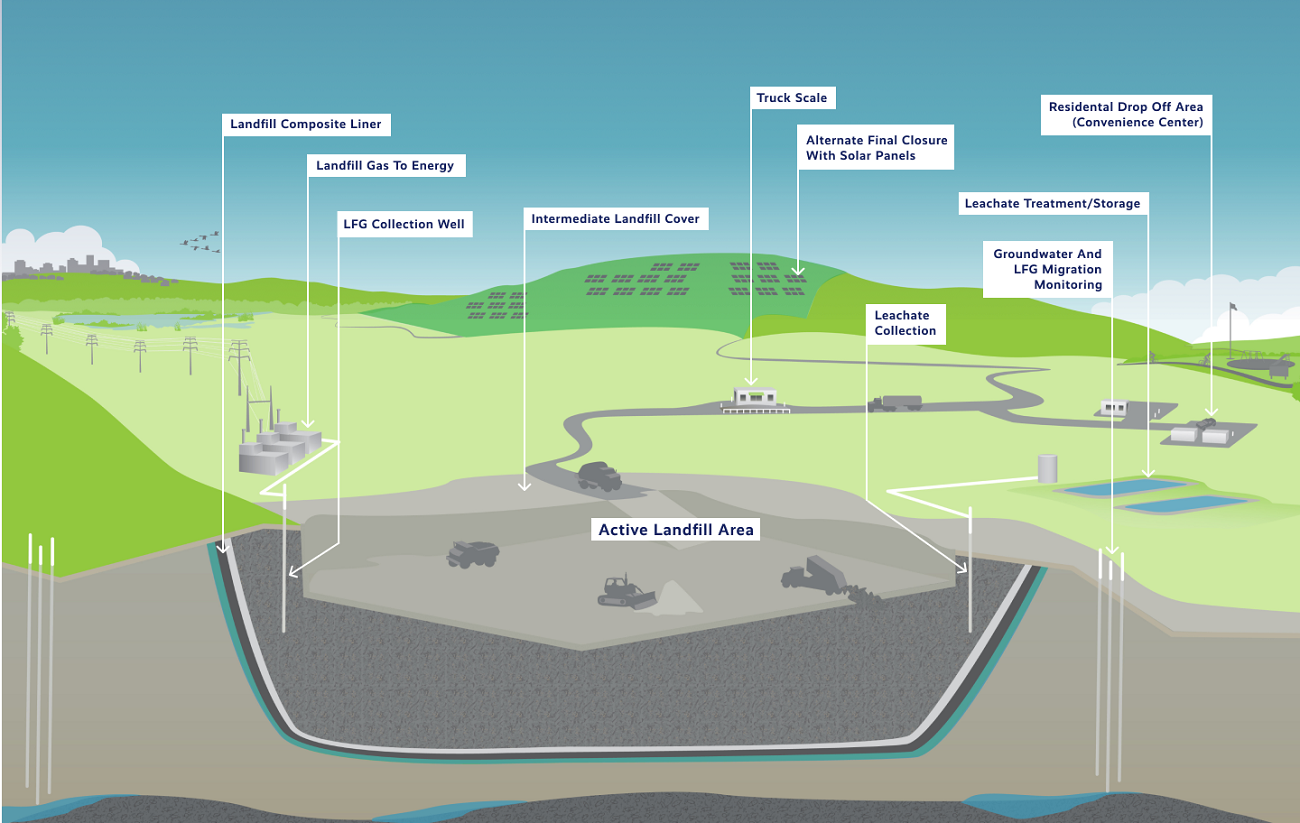When most people hear “Landfill” they think “Dump.” that towering pile random garbage as far as the eye can see? It’s smelly and gross and maybe even dangerous! Well, that was true for some landfills of yesteryear. But that is not at all a true picture of your Regional Landfill. With the development of science and technology and people’s pursuit of high-quality living environment, Nowadays people pay more attention to the collection and treatment of invisible leachate and the design concept of converting waste into energy while treating solid waste for comprehensive landfill sites.
About a decade ago, some waste companies and environmental engineers began noticing a concerning occurrence: liquids were not draining vertically through waste into the floor of the leachate collection system as efficiently. This happened as facilities began receiving more waste types, and it especially caught engineers’ attention when they began noticing elevated temperature landfills, with the latter concern ultimately driving development of more robust liquid collection and removal designs, as there is a correlation between saturated waste masses and elevated temperatures.
If the leachate from those dumps accumulates under the dump, it will eventually pollute surface water or groundwater. If the leachate enters the surrounding embankment, it will affect the stability of the slope. In order to better protect the environment and the health of community residents, it is more important to design and build a more substantial landfill collection system with better drainage function.

As you can see, all along the base of the landfill is a composite liner(drainage geocomposite (flat pipe) and a high density polyethylene (HDPE) geomembrane). it’s specially designed to make sure that the ground (and groundwater) underneath is fully protected from contamination. Also in the base is a “leachate collection system.” Decomposing trash creates liquid. This liquid is called “leachate” and it is collected through a complex series of pipes and pumps. The leachate management system is comprised of a collection system, submersible pumps, forcemains, leachate pretreatment facility and a pump station and loadout facility to discharge leachate to the wastewater treatment system operated by the near district. The collection system includes a geocomposite drainage layer, perforated HDPE piping, stone aggregate and non-woven geotextile filter. Then the leachate will be transported to nearby wastewater treatment system through the HDPE pipeline and converted to pure water.
In addition to liquid, decomposing waste also releases methane gas? If the concentration of methane gas reaches a certain density, it will be very dangerous. This methane gas will be collected and safety cleared by gas collection wells, then turn that gas into energy to be used locally.
These landfill leachates are generally strong corrosive, and some acid and alkali can reach Ph13, while HDPE pipes and HDPE geomembrane have good corrosion resistance, which plays the important role in the application of landfills.
We are not only a product manufacturer, also a solution provider, whether you have a Question or Request For Quotations, we're here to help.